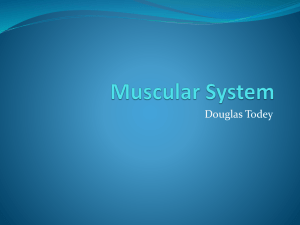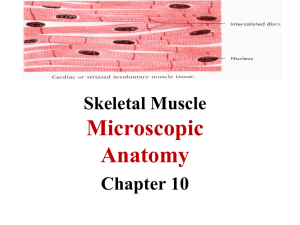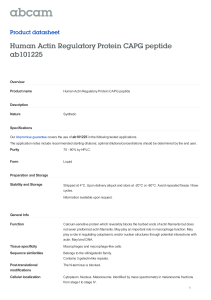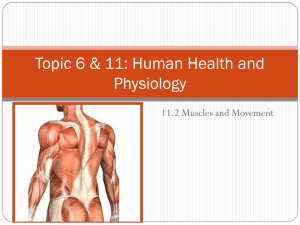Measurements of NO, NOS, iNOS and TXA2 - ISSN: 1545
advertisement
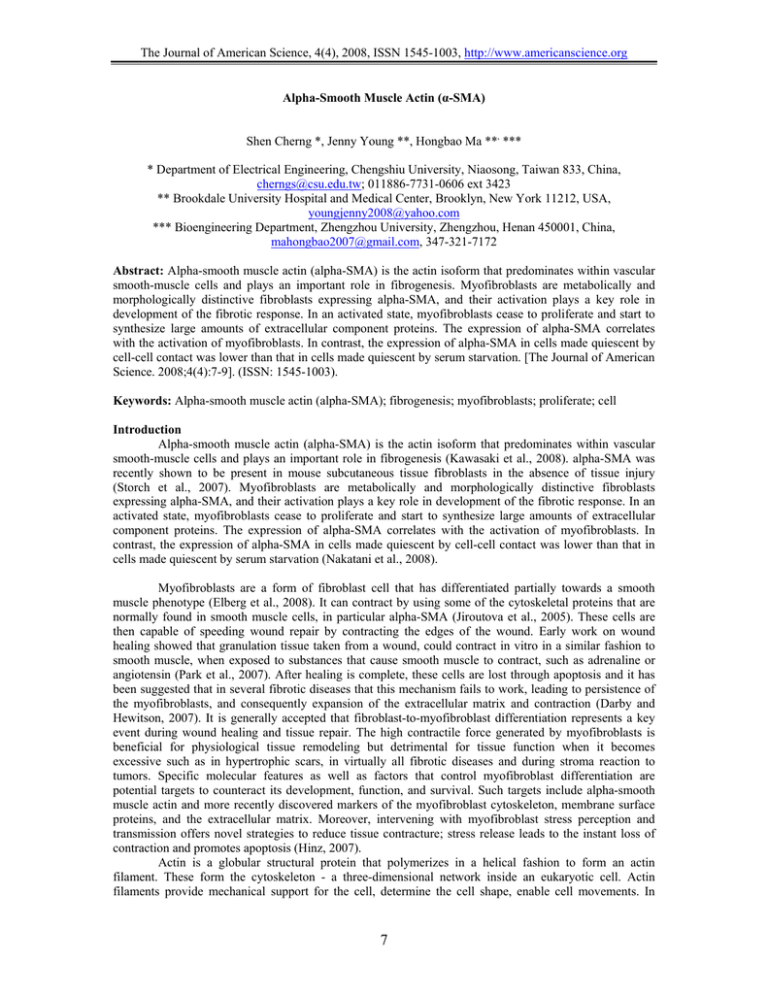
The Journal of American Science, 4(4), 2008, ISSN 1545-1003, http://www.americanscience.org
Alpha-Smooth Muscle Actin (α-SMA)
Shen Cherng *, Jenny Young **, Hongbao Ma **, ***
* Department of Electrical Engineering, Chengshiu University, Niaosong, Taiwan 833, China,
cherngs@csu.edu.tw; 011886-7731-0606 ext 3423
** Brookdale University Hospital and Medical Center, Brooklyn, New York 11212, USA,
youngjenny2008@yahoo.com
*** Bioengineering Department, Zhengzhou University, Zhengzhou, Henan 450001, China,
mahongbao2007@gmail.com, 347-321-7172
Abstract: Alpha-smooth muscle actin (alpha-SMA) is the actin isoform that predominates within vascular
smooth-muscle cells and plays an important role in fibrogenesis. Myofibroblasts are metabolically and
morphologically distinctive fibroblasts expressing alpha-SMA, and their activation plays a key role in
development of the fibrotic response. In an activated state, myofibroblasts cease to proliferate and start to
synthesize large amounts of extracellular component proteins. The expression of alpha-SMA correlates
with the activation of myofibroblasts. In contrast, the expression of alpha-SMA in cells made quiescent by
cell-cell contact was lower than that in cells made quiescent by serum starvation. [The Journal of American
Science. 2008;4(4):7-9]. (ISSN: 1545-1003).
Keywords: Alpha-smooth muscle actin (alpha-SMA); fibrogenesis; myofibroblasts; proliferate; cell
Introduction
Alpha-smooth muscle actin (alpha-SMA) is the actin isoform that predominates within vascular
smooth-muscle cells and plays an important role in fibrogenesis (Kawasaki et al., 2008). alpha-SMA was
recently shown to be present in mouse subcutaneous tissue fibroblasts in the absence of tissue injury
(Storch et al., 2007). Myofibroblasts are metabolically and morphologically distinctive fibroblasts
expressing alpha-SMA, and their activation plays a key role in development of the fibrotic response. In an
activated state, myofibroblasts cease to proliferate and start to synthesize large amounts of extracellular
component proteins. The expression of alpha-SMA correlates with the activation of myofibroblasts. In
contrast, the expression of alpha-SMA in cells made quiescent by cell-cell contact was lower than that in
cells made quiescent by serum starvation (Nakatani et al., 2008).
Myofibroblasts are a form of fibroblast cell that has differentiated partially towards a smooth
muscle phenotype (Elberg et al., 2008). It can contract by using some of the cytoskeletal proteins that are
normally found in smooth muscle cells, in particular alpha-SMA (Jiroutova et al., 2005). These cells are
then capable of speeding wound repair by contracting the edges of the wound. Early work on wound
healing showed that granulation tissue taken from a wound, could contract in vitro in a similar fashion to
smooth muscle, when exposed to substances that cause smooth muscle to contract, such as adrenaline or
angiotensin (Park et al., 2007). After healing is complete, these cells are lost through apoptosis and it has
been suggested that in several fibrotic diseases that this mechanism fails to work, leading to persistence of
the myofibroblasts, and consequently expansion of the extracellular matrix and contraction (Darby and
Hewitson, 2007). It is generally accepted that fibroblast-to-myofibroblast differentiation represents a key
event during wound healing and tissue repair. The high contractile force generated by myofibroblasts is
beneficial for physiological tissue remodeling but detrimental for tissue function when it becomes
excessive such as in hypertrophic scars, in virtually all fibrotic diseases and during stroma reaction to
tumors. Specific molecular features as well as factors that control myofibroblast differentiation are
potential targets to counteract its development, function, and survival. Such targets include alpha-smooth
muscle actin and more recently discovered markers of the myofibroblast cytoskeleton, membrane surface
proteins, and the extracellular matrix. Moreover, intervening with myofibroblast stress perception and
transmission offers novel strategies to reduce tissue contracture; stress release leads to the instant loss of
contraction and promotes apoptosis (Hinz, 2007).
Actin is a globular structural protein that polymerizes in a helical fashion to form an actin
filament. These form the cytoskeleton - a three-dimensional network inside an eukaryotic cell. Actin
filaments provide mechanical support for the cell, determine the cell shape, enable cell movements. In
7
The Journal of American Science, 4(4), 2008, ISSN 1545-1003, http://www.americanscience.org
muscle cells they play an essential role, along with myosin, in muscle contraction. In the cytosol, actin is
predominantly bound to ATP, but can also bind to ADP. An ATP-actin complex polymerizes faster and
dissociates slower than an ADP-actin complex. Actin is one of the most abundant proteins in many
eukaryotic cells, with concentrations of over 100 μM. It is also one of the most highly conserved proteins,
differing by no more than 5% in species as diverse as algae and humans (Lambert et al., 2005).
Alpha-SMA molecular weight is 42 kD. The individual subunits of actin are known as globular
actin, while the filamentous polymer composed of G-actin subunits (a microfilament), is called F-actin. The
microfilaments are the thinnest component of the cytoskeleton, measuring only 7 nm in diameter. Much
like the microtubules, actin filaments are polar, with a fast growing plus (+) or barbed end and a slow
growing minus (-) or pointed end. ADP-actin dissociates from the minus end and the increase in ADP-actin
stimulates the exchange of bound ADP for ATP, leading to more ATP-actin units. This rapid turnover is
important for the cell’s movement. Many cellular functions depend on rapid cytoskeletal rearrangements
localized to specific cytoplasmic domains. End-capping proteins such as CapZ prevent the addition or loss
of monomers at the filament end where actin turnover is unfavourable like in the muscle apparatus
(DiNubile, 1999).
Actin filaments are assembled in two general types of structures: bundles and networks. Actinbinding proteins dictate the formation of either structure since they cross-link actin filaments. Actin
filaments have the appearance of a double-stranded helix. In non-muscle actin bundles, the filaments are
held together such that they are parallel to each other by actin-bundling proteins and/or cationic species.
Bundles play a role in many cellular processes such as cell division (cytokinesis) and cell movement. Actin,
together with myosin filaments, form actomyosin, which provides the mechanism for muscle contraction.
Muscular contraction uses ATP for energy. The ATP allows, through hydrolysis, the myosin head to extend
up and bind with the actin filament. However ATP is not needed to the attachment of myosin (in muscle it
is myosin II) onto the actin filament. The myosin head then releases after moving the actin filament in a
relaxing or contracting movement by usage of ADP (Cooke et al., 1994).
In contractile bundles, the actin-bundling protein actinin separates each filament by 40 nm. This
increase in distance allows the motor protein myosin to interact with the filament, enabling deformation or
contraction. In the first case, one end of myosin is bound to the plasma membrane while the other end
walks towards the plus end of the actin filament. This pulls the membrane into a different shape relative to
the cell cortex. This results in the shortening, or contraction, of the actin bundle. This mechanism is
responsible for muscle contraction and cytokinesis, the division of one cell into two (Lewalle et al., 2008).
Actin filaments, along with many actin-binding proteins form a complex network at the cortical
regions of the cell. Recent studies have also suggested that actin networks on the cell cortex serve as
barriers for molecular diffusion within the plasmic membrane (He et al., 2007; Jaworski et al., 2008).
Principal interactions of structural proteins at cadherin-based adherens junction. Actin filaments
are linked to α-actinin and to membrane through vinculin. The head domain of vinculin associates to Ecadherin via α-, β - and γ -catenins. The tail domain of vinculin binds to membrane lipids and to actin
filaments (Miyake et al., 2006).
Although most yeasts have only a single actin gene, higher eukaryotes generally express several
isoforms of actin encoded by a family of related genes. Mammals have at least six actins, which are divided
into three classes according to their isoelectric point. Alpha actins are generally found in muscle, whereas
beta and gamma isoforms are prominent in non-muscle cells. Although there are small differences in
sequence and properties between the isoforms, all (DeBiase et al., 2006; Lee et al., 2006).
All non-spherical prokaryotes appear to possess genes such as MreB which encode homologues of
actin; these genes are required for the cell's shape to be maintained. The plasmid-derived gene ParM
encodes an actin-like protein whose polymerised form is dynamically unstable, and appears to partition the
plasmid DNA into the daughter cells during cell division by a mechanism analogous to that employed by
microtubules in eukaryotic mitosis (Clerici et al., 2005; Stehle et al., 2007).
Correspondence to:
Shen Cherng
Department of Electrical Engineering
Chengshiu University
Niaosong, Taiwan 833, China
cherngs@csu.edu.tw; 011886-7731-0606 ext 3423
8
The Journal of American Science, 4(4), 2008, ISSN 1545-1003, http://www.americanscience.org
References
Clerici M, Mantiero D, Lucchini G, Longhese MP. 2005. The Saccharomyces cerevisiae Sae2 protein
promotes resection and bridging of double strand break ends. J Biol Chem 280(46):38631-38638.
Cooke R, White H, Pate E. 1994. A model of the release of myosin heads from actin in rapidly contracting
muscle fibers. Biophys J 66(3 Pt 1):778-788.
Darby IA, Hewitson TD. 2007. Fibroblast differentiation in wound healing and fibrosis. Int Rev Cytol
257:143-179.
DeBiase PJ, Lane K, Budinger S, Ridge K, Wilson M, Jones JC. 2006. Laminin-311 (Laminin-6) fiber
assembly by type I-like alveolar cells. J Histochem Cytochem 54(6):665-672.
DiNubile MJ. 1999. Erythrocyte membrane fractions contain free barbed filament ends despite sufficient
concentrations of retained capper(s) to prevent barbed end growth. Cell Motil Cytoskeleton
43(1):10-22.
Elberg G, Chen L, Elberg D, Chan MD, Logan CJ, Turman MA. 2008. MKL1 mediates TGF-{beta}1induced {alpha}-smooth muscle actin expression in human renal epithelial cells. Am J Physiol
Renal Physiol 294(5):F1116-1128.
He J, Liu Y, He S, Wang Q, Pu H, Ji J. 2007. Proteomic analysis of a membrane skeleton fraction from
human liver. J Proteome Res 6(9):3509-3518.
Hinz B. 2007. Formation and function of the myofibroblast during tissue repair. J Invest Dermatol
127(3):526-537.
Jaworski J, Hoogenraad CC, Akhmanova A. 2008. Microtubule plus-end tracking proteins in differentiated
mammalian cells. Int J Biochem Cell Biol 40(4):619-637.
Jiroutova A, Majdiakova L, Cermakova M, Kohlerova R, Kanta J. 2005. Expression of cytoskeletal
proteins in hepatic stellate cells isolated from normal and cirrhotic rat liver. Acta Medica (Hradec
Kralove) 48(3-4):137-144.
Kawasaki Y, Imaizumi T, Matsuura H, Ohara S, Takano K, Suyama K, Hashimoto K, Nozawa R, Suzuki
H, Hosoya M. 2008. Renal expression of alpha-smooth muscle actin and c-Met in children with
Henoch-Schonlein purpura nephritis. Pediatr Nephrol.
Lambert LA, Perri H, Meehan TJ. 2005. Evolution of duplications in the transferrin family of proteins.
Comp Biochem Physiol B Biochem Mol Biol 140(1):11-25.
Lee C, Dixelius J, Thulin A, Kawamura H, Claesson-Welsh L, Olsson AK. 2006. Signal transduction in
endothelial cells by the angiogenesis inhibitor histidine-rich glycoprotein targets focal adhesions.
Exp Cell Res 312(13):2547-2556.
Lewalle A, Steffen W, Stevenson O, Ouyang Z, Sleep J. 2008. Single-molecule measurement of the
stiffness of the rigor myosin head. Biophys J 94(6):2160-2169.
Miyake Y, Inoue N, Nishimura K, Kinoshita N, Hosoya H, Yonemura S. 2006. Actomyosin tension is
required for correct recruitment of adherens junction components and zonula occludens formation.
Exp Cell Res 312(9):1637-1650.
Nakatani T, Honda E, Hayakawa S, Sato M, Satoh K, Kudo M, Munakata H. 2008. Effects of decorin on
the expression of alpha-smooth muscle actin in a human myofibroblast cell line. Mol Cell
Biochem 308(1-2):201-207.
Park S, Bivona BJ, Harrison-Bernard LM. 2007. Compromised renal microvascular reactivity of
angiotensin type 1 double null mice. Am J Physiol Renal Physiol 293(1):F60-67.
Stehle IM, Postberg J, Rupprecht S, Cremer T, Jackson DA, Lipps HJ. 2007. Establishment and mitotic
stability of an extra-chromosomal mammalian replicon. BMC Cell Biol 8:33.
Storch KN, Taatjes DJ, Bouffard NA, Locknar S, Bishop NM, Langevin HM. 2007. Alpha smooth muscle
actin distribution in cytoplasm and nuclear invaginations of connective tissue fibroblasts.
Histochem Cell Biol 127(5):523-530.
9

